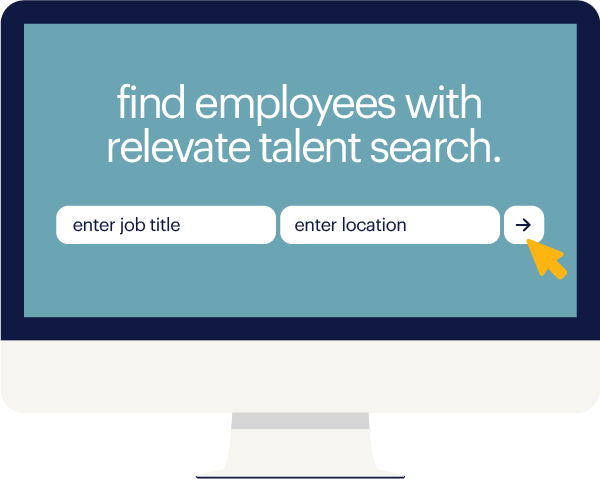If you're struggling to hire registered nurses (RN) at your facility, you're hardly alone. Labor insight provider Burning Glass shows there have been more than 960,000 job postings for RNs in the past 12 months and it takes an average of 38 days to hire an RN. So the real question is: How can you hire top-notch registered nurses for your organization quickly and with the least amount of effort and expense?
Here's a simple checklist of what you need to hire a great registered nurse:
1. make sure your hiring process is as efficient as it getsNeed help checking off these items? Read on for simple ways to do so.
1. speed up your hiring process
Many organizations today are feeling the pinch of lengthy hiring timelines — and when you need to hire immediately, the costs and consequences of a drawn-out cycle can be especially heavy. Identify your efficiencies using this diagram and start cutting down wasted efforts.
2. develop a competitive compensation package
If you aren't sure whether or not your current pay rates are competitive, Randstad's salary guide is a good place to start.
The national averages in our salary guide make for a great starting point. But since compensation for RNs varies significantly from one state or market to the next, use Randstad's salary calculator to get up-to-date data on actual pay rates for RNs and other key roles in your specific market.
3. identify the top skills for RNs
Next, work closely with hiring managers and other supervisors to pinpoint the skills, training and experience that are critical to success. These will be useful for when you're writing the job description.
Think about which qualifications are "must-haves" — relevant certifications like BLS, CPR or ACLS — versus "nice-to-haves." Focus on what really matters, like these top skills for RNs:
patient care
advanced cardiac life support (ACLS)
treatment planning
cardiopulmonary resuscitation (CPR)
acute care
life support
4. write an eye-catching job description
Writing a job description can be tricky, but here are three simple things to keep in mind to find the right candidate:
don't write like a robot
Too many healthcare employers today write job descriptions like a laundry list of duties. Poke around on job boards like Monster and you'll likely find RN job descriptions that read as if they were written by compliance lawyers — or robots, for that matter. So take a smarter approach: One, anchor your job description around the positive (like opportunities for growth or development), and two, explain the job itself in human terms with an emphasis on the value the role brings to the organization, like being a trusted educator to patients or the ability to mentor more junior peers.
show how this job can be meaningful
You want someone who will find their jobs meaningful, so don't leave out human elements. What are coworkers like? What's the workplace culture like? And what are the day-to-day challenges and rewards of the job? For example, emphasize the satisfaction nurses feel knowing that they've made a difference in the life of their patients after seeing them through physically — and emotionally — challenging times.
make it easy to skim
Finally, consider using bullet points to break up the text, which can make your job description not only more appealing visually but easier to read. Candidates want to know the most important aspects of the role within the first 10 seconds of reading the post, so be sure to call out the way schedules are set or what opportunities there will be for extended training and education.
These simple tips should make your job descriptions infinitely more engaging — and ensure that a steady stream of resumes flows to your inbox in no time. If you want more in-depth advice, our guide to writing highly effective job descriptions should help you out.
5. brush up on the latest industry trends
Demand for RNs is undergoing massive change, driven by a host of factors — and in order to develop an effective talent strategy, you'll need to understand them in detail. After all, how can you get out ahead of tomorrow's hiring needs if you don't know where the industry is going next?
Here are a few trends to keep top of mind:
- Demand for RNs is projected to grow seven percent by 2029 — a rate that's nearly double the national average for all other occupations.
- This increase in demand is largely driven by two factors: the shortage of nurses together with a growing elderly population.
demand for RNs will have significant growth by 2029.
6. choose your channels to find candidates
There are any number of ways to go about finding the RN that's right for your organization. But one of the more successful paths is to work with a staffing firm that has demonstrated expertise in the healthcare space. Qualified RNs are going to continue to be highly in demand for the foreseeable future, which is why gaining access to a large network of talent — screened, vetted and available on demand — can make a huge difference, no matter how your specific or large-scale your needs may be. Plus, it's an approach to hiring RNs that can pay off in multiple ways, as staffing firms can also help you reduce risks, increase your safety maturity and drive bottom-line improvements.
Get in touch with the healthcare experts at Randstad for help finding your next great RN. Or you can head on over to our Find Employees portal and start browsing a large pool of screened and vetted RNs right away.








